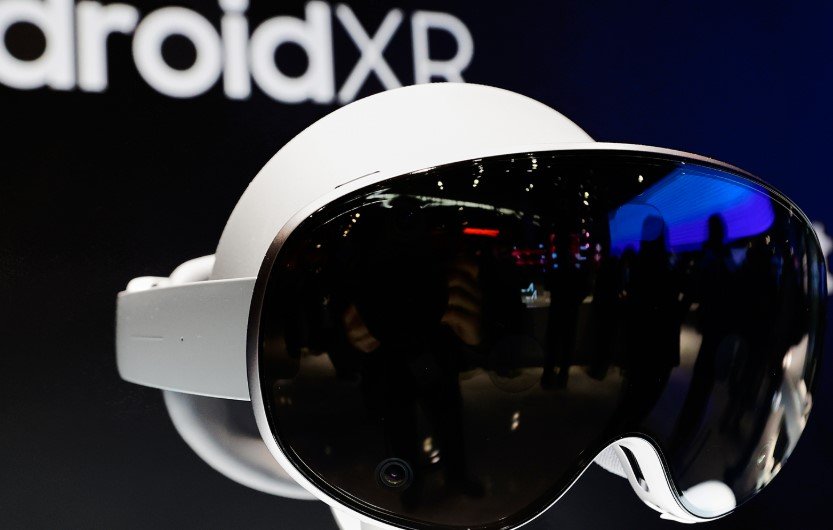Samsung Electronics unveiled its new Galaxy XR extended reality headset on October 22, 2025, in a bold move to compete with Apple’s Vision Pro in the growing mixed reality market. Partnering with Google and Qualcomm, the company aims to deliver advanced AI features and high end performance at a more affordable price, setting the stage for a heated rivalry among tech giants.
Key Features of the Galaxy XR Headset
This latest device boasts impressive specs that position it as a strong contender. Powered by Qualcomm’s Snapdragon XR2 Plus Gen 2 chip, it runs on the new Android XR operating system, which integrates seamlessly with Google services.
The headset includes dual high resolution displays totaling 27 megapixels, offering a pixel density of over 4,000 PPI for sharp visuals. Users can expect AI driven experiences, such as real time object recognition and enhanced virtual interactions, thanks to Google’s Gemini AI.
Battery life supports up to four hours of continuous use, with a lightweight design weighing under 600 grams, making it more comfortable for extended sessions compared to bulkier rivals.

Partnership Details and Tech Innovations
Samsung’s collaboration with Google and Qualcomm brings together expertise in hardware, software, and AI. Google provides the Android XR platform, ensuring compatibility with millions of existing Android apps optimized for mixed reality.
Qualcomm’s chip enables smooth performance for tasks like 3D mapping and gesture controls. This trio has focused on creating a device that blends augmented and virtual reality, allowing users to overlay digital content onto the real world without heavy hardware.
In recent months, similar partnerships have emerged in the tech space, such as Meta’s updates to its Quest line, but Samsung’s approach emphasizes AI integration from the start. Executives highlighted plans for future devices, including smart glasses, building on this foundation.
The launch comes amid a surge in XR investments, with global market projections reaching $50 billion by 2026, driven by demand in gaming, education, and remote work.
Pricing and Market Positioning
Priced at $1,799, the Galaxy XR undercuts Apple’s Vision Pro, which starts at $3,499, making it more accessible to consumers eager to explore mixed reality without breaking the bank.
Availability begins with pre orders in the US and South Korea, with wider rollout expected by early 2026. Samsung aims to capture market share from Meta, which holds about 80 percent of the VR headset space, by offering better value and features.
| Feature | Galaxy XR | Apple Vision Pro |
|---|---|---|
| Price | $1,799 | $3,499 |
| Display Resolution | 27MP total, 4,032 PPI | 23MP total, 3,660 PPI |
| Weight | Under 600g | 650g |
| Operating System | Android XR | visionOS |
| AI Integration | Gemini AI | Apple Intelligence |
| Battery Life | Up to 4 hours | Up to 2 hours |
This comparison shows Samsung’s edge in affordability and comfort, though Apple’s ecosystem remains a draw for loyal users.
Analysts predict this pricing strategy could boost adoption rates, especially as economic pressures make high end tech purchases more selective.
Competition and Industry Impact
The Galaxy XR enters a competitive field dominated by Meta and Apple. Meta’s Quest 3 focuses on affordability and social features, while Apple’s Vision Pro emphasizes premium build and seamless integration with iOS devices.
Samsung’s entry, backed by Google, could shift dynamics by bringing Android’s vast app ecosystem into XR. Recent events, like OpenAI’s foray into similar tech with a $6.5 billion investment, signal growing interest in AI powered wearables.
Consumer feedback from early demos praises the headset’s passthrough cameras for clear real world views, reducing the isolation often felt in VR. However, challenges remain, such as app developer support and battery improvements.
Industry experts note that this launch aligns with broader trends, including remote collaboration tools post pandemic, where XR devices enhance virtual meetings.
Future Prospects and Challenges
Looking ahead, Samsung plans to expand its XR lineup with lighter glasses in partnership with eyewear brands like Warby Parker. These could integrate AI for everyday tasks, such as navigation or real time translations.
Challenges include building a robust app store and addressing privacy concerns with AI data collection. Success will depend on user adoption and how well it integrates with daily life.
As the market evolves, this device could pave the way for more mainstream XR use, similar to how smartphones transformed communication.
What do you think about Samsung’s new headset? Share your thoughts in the comments below and spread the word if you found this article helpful.








